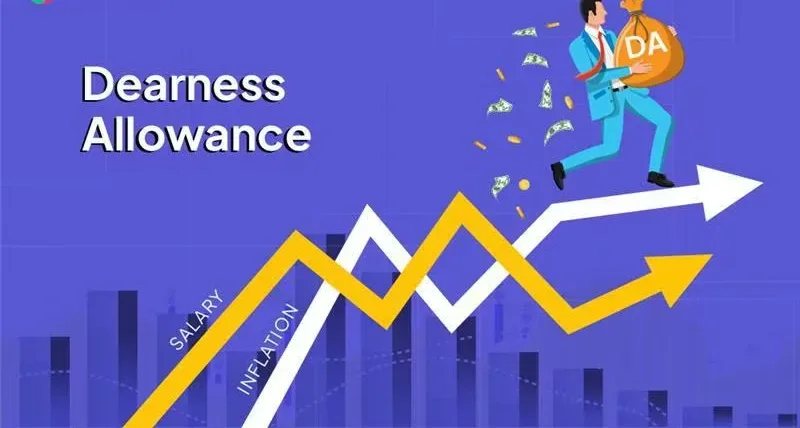Dearness Allowance (DA) is an extra payment employers give to employees to help with the cost of living. It’s a part of salary structures worldwide, designed to offset the effects of inflation. Essentially, DA is a percentage of the salary that gets revised every six months based on changes in the cost of living. The government and some private sectors provide this benefit. The main goal of DA is to ensure that employees can maintain their purchasing power despite rising prices of goods and services. The DA amount varies depending on whether the employee is in an urban, semi-urban, or rural area.

Recent Increase in Dearness Allowance
Recently, the Union Cabinet announced a 4% hike in DA and Dearness Relief (DR) for central government employees. This change increased DA from 46% to 50%, effective from January 1, 2023. This adjustment benefits 67.95 lakh pensioners and 49.18 lakh central government employees. While this update applies to government employees, private companies may choose whether or not to follow it.
Types of Dearness Allowance
Dearness Allowance is divided into two main types:
- Variable Dearness Allowance (VDA):
- Variable DA: Adjusts based on changes in the Consumer Price Index (CPI).
- Base Index: Stays fixed unless changed by the government.
- CPI: Reflects monthly changes affecting VDA value.
- Industrial Dearness Allowance (IDA):
- Applies to employees in the industrial sector, particularly in government or public sectors.
- Adjusts every six months based on the All India Consumer Price Index (CPI).
- Helps maintain real income levels despite inflation.
Calculating Dearness Allowance (DA)
DA is calculated as a percentage of the basic salary using the following steps:
- Identify Base Index: The starting Consumer Price Index (CPI) or Wholesale Price Index (WPI).
- Identify Current Index: The latest CPI or WPI reflecting current living costs.
Is Dearness Allowance (DA) Taxable?
Yes, DA is taxable under the Income Tax Act. It is included in an individual’s total income. Employers usually deduct Tax Deducted at Source (TDS) from the salary, including DA, and deposit it with the government. Employees must declare their DA and other income details when filing their tax returns.
Challenges in Dearness Allowance (DA)
- Reactivity vs. Proactivity: DA adjusts to current inflation rather than anticipating economic challenges.
- Standardised Approach: DA is based on inflation and doesn’t account for individual financial needs.
- Financial Strain on Organizations: High inflation can strain public sector organizations financially.
- Personalization Concerns: A personalized approach to compensation might address individual circumstances better than inflation-based adjustments.
FAQs on Dearness Allowance (DA)
- What is DA? DA is an additional payment to employees to adjust for the cost of living, based on inflation.
- What is DA for Class A employees? DA for Class A refers to high-ranking government officers. It is a percentage of their basic salary.
- What is DA for Class A in Karnataka? It’s a percentage of the basic salary based on the All India Consumer Index (CPI).
- What happens when DA reaches 50%? When DA hits 50%, it significantly adjusts compensation to counteract inflation.
- What is the DA rate for the 6th Pay Commission? The DA rate for the 6th Pay Commission is revised twice a year based on the CPI.
- What is the DA rate for the 5th Pay Commission? Under the 5th Pay Commission, DA increased from 381% to 396%.
- Is DA taxable? Yes, DA is fully taxable and must be declared in tax returns.
- What is the current DA rate? As of January 1, 2024, the current DA rate is 50%.
- Calculate the Index Point Increase
- Base Index – Current Index = Increase in Index Points
- Now, apply the approved formula-
- Dearness Allowance(DA) = (Average Index-Base Index)/Base Index * 100 Specific formulas vary according to the organisation or government policies.
- Do private employees get DA? Private employees are not entitled to DA by law, but some private companies may offer it.
- Is DA compulsory? DA is compulsory for government sectors but not for private sectors.
By understanding Dearness Allowance, employees can better manage their finances and employers can ensure fair compensation.